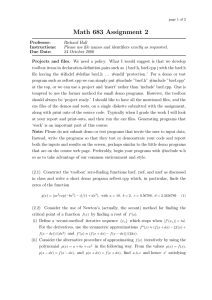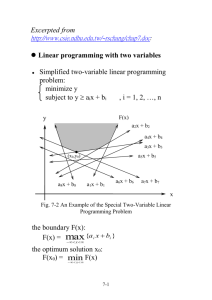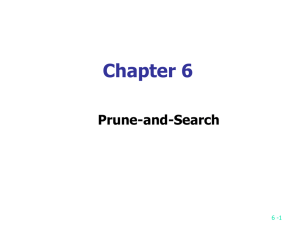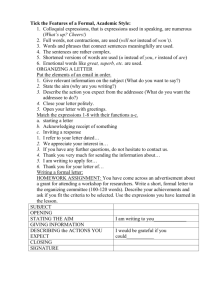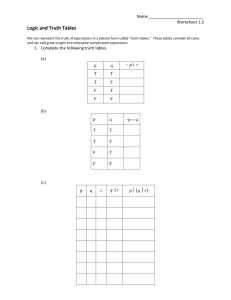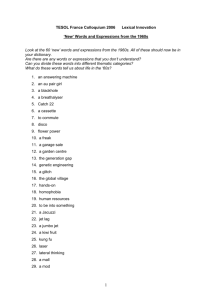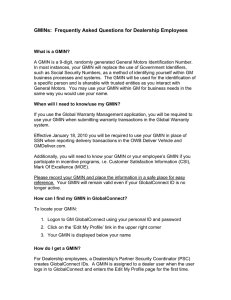Exercises to Chapter 14
advertisement
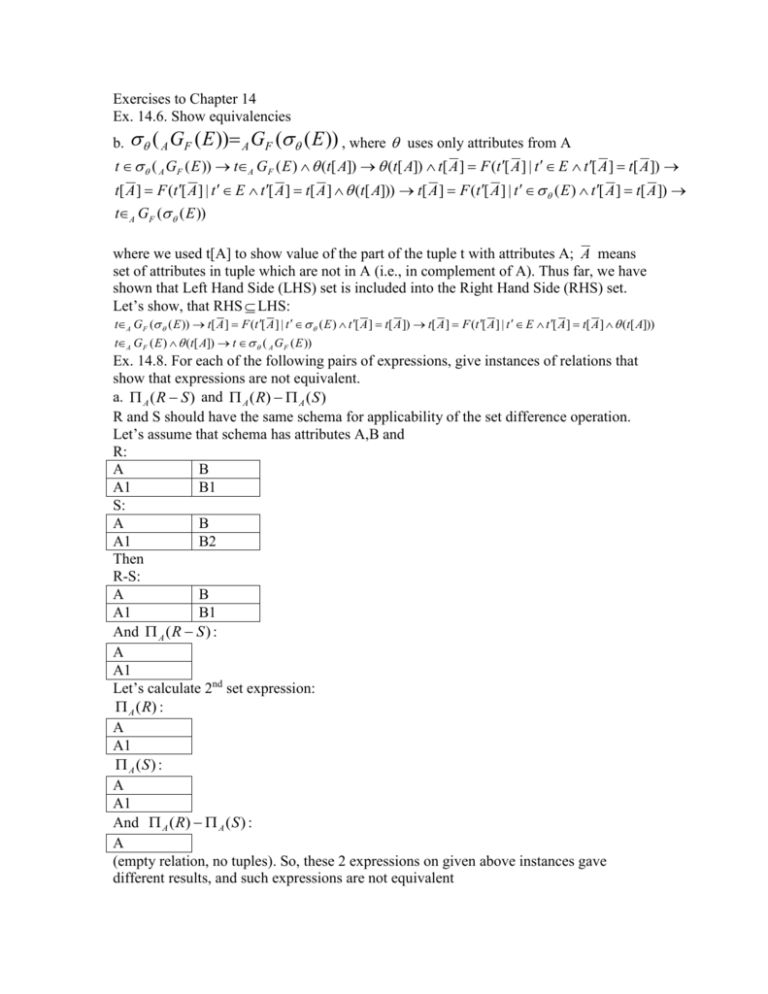
Exercises to Chapter 14 Ex. 14.6. Show equivalencies b. ( A GF ( E )) A GF ( ( E )) , where uses only attributes from A t ( A GF ( E )) tA GF ( E ) (t[ A]) (t[ A]) t[ A ] F (t [ A ] | t E t [ A ] t[ A ]) t[ A ] F (t [ A ] | t E t [ A ] t[ A ] (t[ A])) t[ A ] F (t [ A ] | t ( E ) t [ A ] t[ A ]) tA GF ( ( E )) where we used t[A] to show value of the part of the tuple t with attributes A; A means set of attributes in tuple which are not in A (i.e., in complement of A). Thus far, we have shown that Left Hand Side (LHS) set is included into the Right Hand Side (RHS) set. Let’s show, that RHS LHS: tA G F ( ( E )) t[ A ] F (t [ A ] | t ( E ) t [ A ] t[ A ]) t[ A ] F (t [ A ] | t E t [ A ] t[ A ] (t[ A])) tA G F ( E ) (t[ A]) t ( A G F ( E )) Ex. 14.8. For each of the following pairs of expressions, give instances of relations that show that expressions are not equivalent. a. A ( R S ) and A ( R) A ( S ) R and S should have the same schema for applicability of the set difference operation. Let’s assume that schema has attributes A,B and R: A B A1 B1 S: A B A1 B2 Then R-S: A B A1 B1 And A ( R S ) : A A1 Let’s calculate 2nd set expression: A (R) : A A1 A (S ) : A A1 And A ( R) A ( S ) : A (empty relation, no tuples). So, these 2 expressions on given above instances gave different results, and such expressions are not equivalent b. B4 ( A Gmax( B ) ( R )) and A Gmax( B ) ( B4 ( R )) Let’s consider R: A B 1 2 3 3 A 1 2 1 2 Gmax( B ) ( R ) : A B 1 1 2 2 3 2 And B4 ( A Gmax( B ) ( R )) : A B 1 1 2 2 3 2 Let’s consider 2nd expression. B4 ( R) : A B 1 1 2 2 3 1 3 2 And A Gmax( B ) ( B4 ( R )) : A B 1 1 2 2 3 2 This is the same as for the 1st expression. But now let’s consider the following relation R: A B 1 2 3 3 1 2 1 2 3 10 In this case A G max( B ) ( R ) : A B 1 1 2 2 3 10 And B4 ( A Gmax( B ) ( R )) : A B 1 1 2 2 Let’s consider 2nd expression. B4 ( R) : A B 1 1 2 2 3 1 3 2 And A Gmax( B ) ( B4 ( R )) : A B 1 1 2 2 3 2 st So, 1 result has 2 tuples, and 2nd result has 3 tuples, hence these 2 expressions are not equivalent (we have constructed counter example for equivalence). c. In the preceding expressions, if both occurrences of max were replaced by min would the expressions be equivalent? B4 ( A Gmin( B ) ( R )) and A Gmin( B ) ( B4 ( R )) If to consider the same example as in the previous case, we shall equality, for instance: R: A B 1 2 3 3 3 In this case A Gmin( B ) ( R ) : 1 2 1 2 10 A B 1 1 2 2 3 1 And B4 ( A Gmin( B ) ( R )) : A B 1 1 2 2 3 1 Let’s consider 2nd expression. B4 ( R) : A B 1 2 3 3 And A 1 2 1 2 A Gmin( B ) ( B4 ( R)) : B 1 1 2 2 3 1 Results are the same. We can prove it considering: tA Gmin( B ) ( B4 ( R )) t[ B ] min( t [ B ] | t B4 ( R ) t[ A] t [ A]) min( t [ B ] | t R t [ B ] 4 t[ A] t [ A]) t[ B ] 4 min( t [ B ] | t R t[ A] t [ A]) t B4 ( A Gmin( B ) ( R )) And in the opposite direction: t B4 ( A Gmin( B ) ( R )) t[ B ] 4 min( t [ B ] | t R t[ A] t [ A]) min( t [ B ] | t R t [ B ] 4 t[ A] t [ A]) t[ B ] min( t [ B ] | t B4 ( R ) t[ A] t [ A]) tA Gmin( B ) ( B4 ( R )) In the case of choosing max(B), it may happen that if at first we apply aggregation, then for some attribute A we may get max(B)>=4 (in our example, for A=3 we had max(B)=10), and such records will be filtered out by the next selection of records with B<4. From the other side, if at first to select tuples with B<4, then next aggregation will use only values less than 4 (we had 2 such tuples for A=3: with B=1,2), and in the result we shall have record with such value of A(we had tuple with A=3, B=2 in one result and no tuples with A=3 in the other) But in the case of aggregation on min, if tuples satisfying B<4 exist, then min value will also exist together with them, order of operations does not affect on the result.
